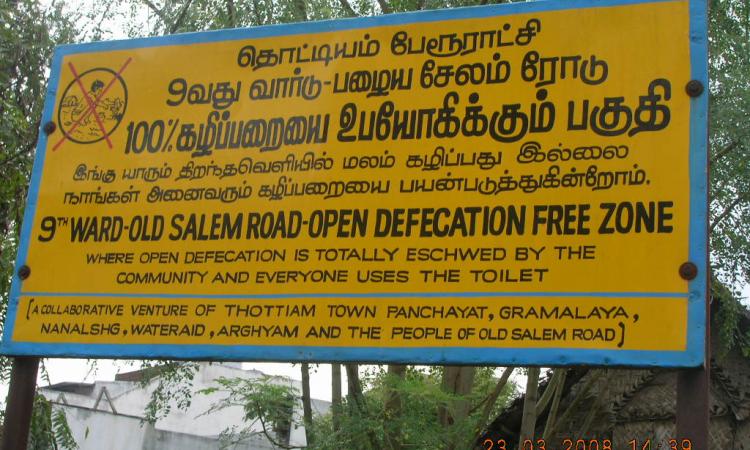
In the race against time to ensure safe access to sanitation, reminiscent of the tenacious hummingbird who does what she can to fight the great fire – carrying droplets of water in her beak, collective efforts and private sector engagement emerge as pivotal forces. The Swachh Bharat Mission, a beacon of change, transformed India from a major contributor to global open defecation to a rural sanitation leader within just five years. Yet, amidst accolades, persistent gaps linger, urging a renewed commitment from the government.
And when it comes to addressing the sanitation problem in India, the world’s most populous country with 1.43 billion people (over 17% of the world’s population), like the hummingbird, it would certainly require the efforts and contributions of every individual and every stakeholder, including the private sector, particularly as its role has shifted beyond workers’ welfare, charity, and legally binding mandatory investments towards corporate social responsibility (CSR) to environmental, social, & governance (ESG) responsibilities and reporting. The private sector, akin to the hummingbird's droplets, is key to sustaining open defecation free status and realising sustainable development goals (SDG) 6 targets by 2030.
On October 2, 2019, on the 150th birth anniversary of Mahatma Gandhi, the culmination date for the first phase of the Swachh Bharat Mission, all the states and union territories self-reported themselves as open defecation free. This movement has had a tremendous impact on global advancement towards SDG 6. According to the World Health Organization’s (WHO) study of health gains from the Swachh Bharat Mission (Gramin) conducted in 2018, the programme would result in averting more than 3 lakh deaths between 2014 and October 2019.
Similarly, according to UNICEF estimate, the investments that the government made in sanitation in India are bringing a whopping 400% return. According to the same estimates, each rural household in an open-defecation-free village saves Rs 50,000 by avoiding out-of-pocket health spending and time savings. The initiative has also created jobs for a large number of people.
However, despite the magnanimous achievements and impact, various studies indicate that there are still some gaps that need to be addressed to ensure open defecation free sustainability. According to the National Family Health Survey (NFHS) 5 survey findings, 69% of Indian households use improved toilet facilities, which are non-shared facilities that prevent people from coming into contact with human waste and can reduce the transmission of cholera, typhoid, and other diseases. Shared toilet facilities of an otherwise acceptable type are also common, especially in urban areas; 11% of urban households use a shared facility, compared with 7% of rural households. It means that 19% of households do not use any toilet facility, meaning that they practice open defecation[1].
Besides, concerns regarding open defecation free sustainability were again raised following the recent release of the Joint Monitoring Program (JMP) report on water, sanitation, and hygiene by WHO and UNICEF for the year 2022[2] for monitoring global progress on SDG 6. The report stated that approximately 17% of the total population in India continues to practice open defecation. According to the report, a quarter of the rural population didn’t have even “at least basic” sanitation facilities. The JMP report for monitoring progress on SDG 6 defines “basic” services as the improved sanitation facility which households don’t share with others.
In reaffirmation of its commitment to sustain open defecation free, the government continued with its effort with the identification of left-out families, building 113.4 million household toilets and 2,38,441 community sanitary complexes as of November 15, 2023, to address the gap under Swachh Bharat Mission 2.0. However, the efforts and investments would require proactive support and contribution both from the public and private sectors.
While the private sector has made appreciable contributions towards achieving the country’s and global sanitation goals by making a direct donation to Swachh Bharat Kosh in the initial phase of the Swachh Bharat Mission as well as supporting sanitation centric projects under CSR, a recent report, The State of CSR in India by India Data Insights & Sattva, indicates CSR investment in the water and sanitation sector over the past eight years remains very low as compared to other sectors such as education and health.[3]
WaterAid, an international non-governmental organisation, in collaboration with partners Diageo, Gap Inc., HSBC, Twinings, and Ekaterra, conducted groundbreaking WASH research across ten workplaces in Bangladesh, India, Kenya, and Tanzania from 2018–20. The study highlights the significant socio-economic benefits of investing in water, sanitation, and hygiene (WASH).
Results showed that for every $1 spent, combined apparel sector factories delivered a $1.32 return, and tea sector projects saw a $2.05 return. Productivity emerged as a key factor in return on investment (ROI), especially in three tanneries in Unnao, and Uttar Pradesh. With a continued ten-year WASH investment projection, Indian factories showed an estimated overall ROI of $2 for every $1 invested. The research underscores the importance of community interventions alongside workplace and supply chain investments for optimal results.[4]
Commencing with the transformative Swachh Bharat Mission, the nation rapidly evolved from a significant contributor to global open defecation to a rural sanitation leader, heralding global advancements towards SDG 6. Despite accolades, persistent gaps persist, highlighted by studies indicating varied toilet usage and concerns over open defecation-free sustainability. With just six and a half years left to meet the global commitments, the countries have to hard press the accelerator and work, on average, five times faster to meet the sanitation target of SDG 6—safe toilets and water for all by 2030—on time. The efforts and investment from the private sector, like the hummingbird, will enable the country to sustain its open defecation free status and lead the world to achieve SDG 6 sanitation targets.
Author
Farrukh Rahman Khan is the State Programme Director, WaterAid India. He can be reached at FarrukhKhan@wateraid.org
/articles/unlocking-hygienic-horizons